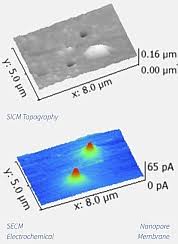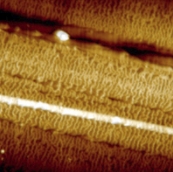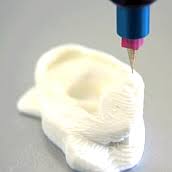|
Join us for a webinar to learn about a cutting-edge application of nanoscientific research:
Atomic Force Microscopy PinPoint Nanomechanical Mode for Nanoscale Modulus Mapping – Cantilever Modulus and Applied Force
The applications staff of Park Systems will give this webinar on atomic force microscopy PinPoint Nanomechanical Mode for Nanoscale Modulus Mapping, specifically, we will look at the influence of cantilever stiffness and applied force on the measured modulus.
PinPoint Nanomechanical mode obtains the best of resolution and accuracy for nanomechanical characterization. Stiffness, elastic modulus, adhesion force are acquired simultaneously in real-time. While the XY scanner stops, the high speed force-distance curves are taken with well defined control of contact force and contact time between the tip and the sample. Due to controllable data acquisition time, PinPoint™ Nanomechanical mode allows optimized nanomechanical measurement with high signal-to-noise ratio over various sample surfaces.
Join us as Dr. Wenqing Shi, Applications Scientist here at Park Systems, gives an overview of PinPoint Nanomechanical Mode, the influence of cantilever stiffness and applied force on the measured modulus.
 PinPoint Nanomechanical Mode is a new atomic force microscopy-based method that can acquire a quantifiable elasticity map at a dramatically faster rate than traditional force-volume spectroscopy techniques without sacrificing resolution. PinPoint Nanomechanical Mode is a new atomic force microscopy-based method that can acquire a quantifiable elasticity map at a dramatically faster rate than traditional force-volume spectroscopy techniques without sacrificing resolution.
Register by clicking session below:
Thursday, March 29, 2018
ONLINE REGISTRATION PAGE
- Thursday, March 29, 2018, 9:30am – 10:30 am(China Time),Beijing
- Wednesday, March 28, 2018, 5:30pm – 6:30pm(PDT)San Francisco, Los Angeles
- Wednesday, March 28, 2018, 8:30pm – 9:30pm(EDT) Boston, New York
- Thursday, March 29, 2018, 2018, 1:30am – 2:30am (BST) London
- Thursday, March 29, 2018, 2:30am – 3:30am(CEST) Paris, Rome
|
|
|
Webinar Details
|
|
Date and Time:
Thursday, March 29, 2018
9:30am – 10:30 am(China Time) Beijing
Wednesday, March 28, 2018
5:30pm – 6:30pm(PDT) San Francisco, Los Angeles
Wednesday, March 28, 2018
8:30pm – 9:30pm(EDT) Boston, New York
Thursday, March 29, 2018
1:30am – 2:30am (BST) London
Thursday, March 29, 2018
2:30am – 3:30am(CEST) Paris, Rome
|
|
|
|
|
AFM image of amyloid fibrils of
A 30 um x 30 um scan of an adhesive sample taken at 0.23 Hz with PinPoint Nanomechanical Mode using a Park NX10 AFM system.
Image Credit: Park Systems / ST Instruments
|
|
|












